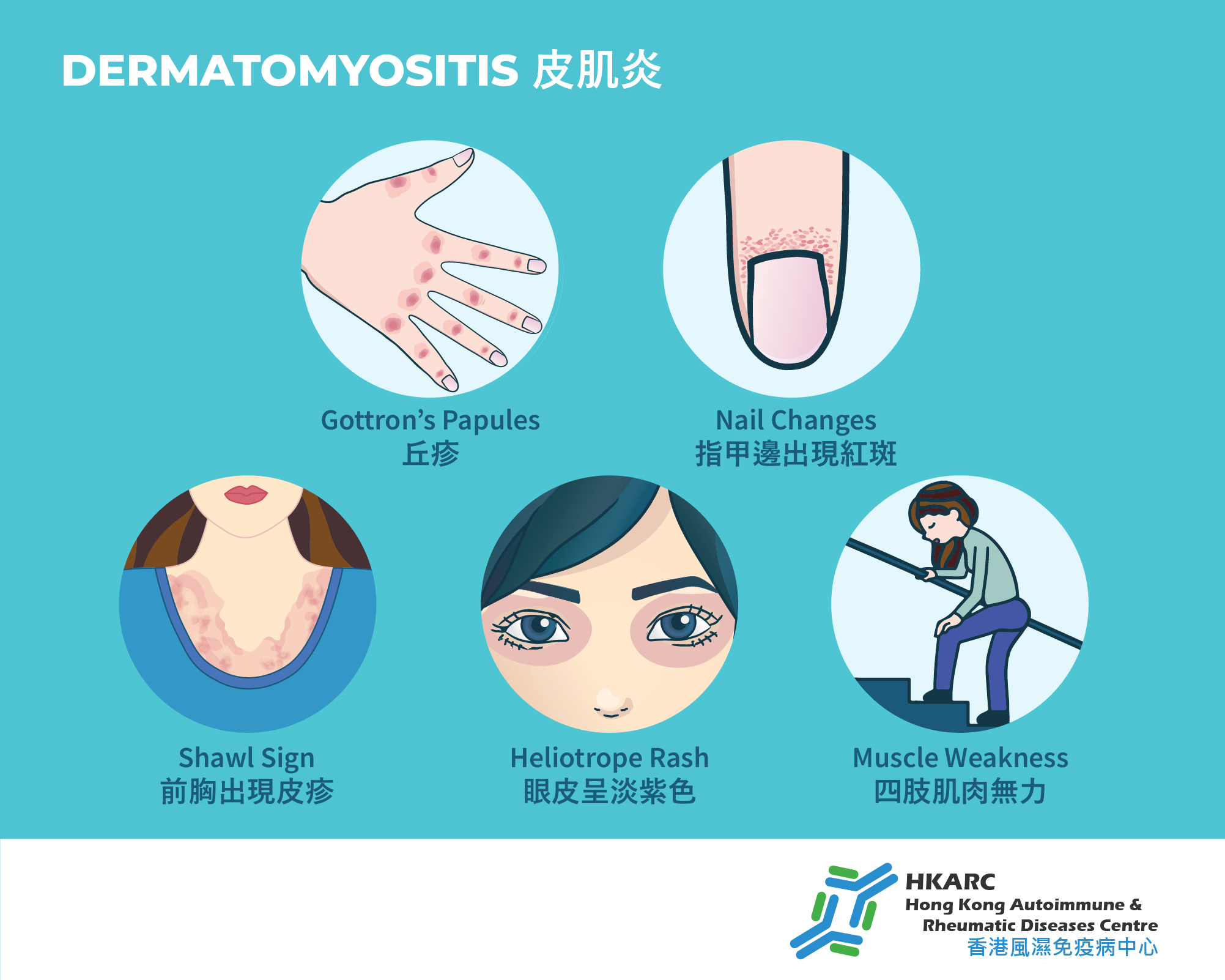What is Dermatomyositis & Polymyositis?
Dermatomyositis (DM) and polymyositis (PM) are chronic inflammatory muscle diseases caused by autoimmune dysfunction, leading to attack on the proximal muscles. Patients experience long-term fatigue and weakness in muscles such as the arms and thighs, which can severely impact walking and daily activities. DM patients may also develop characteristic rashes or purple spots on the skin, commonly around finger joints and eyelids.
Both conditions can be associated with other comorbidities, such as arthritis and lung fibrosis. Some cases of DM may have serious complications, including cancer and rapidly progressive interstitial lung disease.
Diagnosis involves blood tests; elevated muscle enzymes in serum suggest muscle inflammation. If enzymes remain high or increase significantly, further tests like electromyography (EMG) and muscle biopsy are indicated.
Approximately 70% of patients with inflammatory myopathies have specific autoantibodies. These antibodies can help classify the disease and predict potential complications. Key autoantibodies include:
Anti-MDA5: Associated with rapidly progressive interstitial lung disease, with a high mortality rate (~50% at six months). Often, muscle involvement is mild or absent, and serum muscle enzymes may be normal. Patients might exhibit facial and finger joint rashes, and ulcers on fingers.
Anti-TIF1 gamma: Linked to cancer, with about half of the patients diagnosed with malignancies within a year of myositis onset. Widespread skin rashes can be present on face, body, and limbs.
Early diagnosis and treatment are crucial to improve outcomes. Prompt intervention during early stages significantly increases the chances of successful management.

